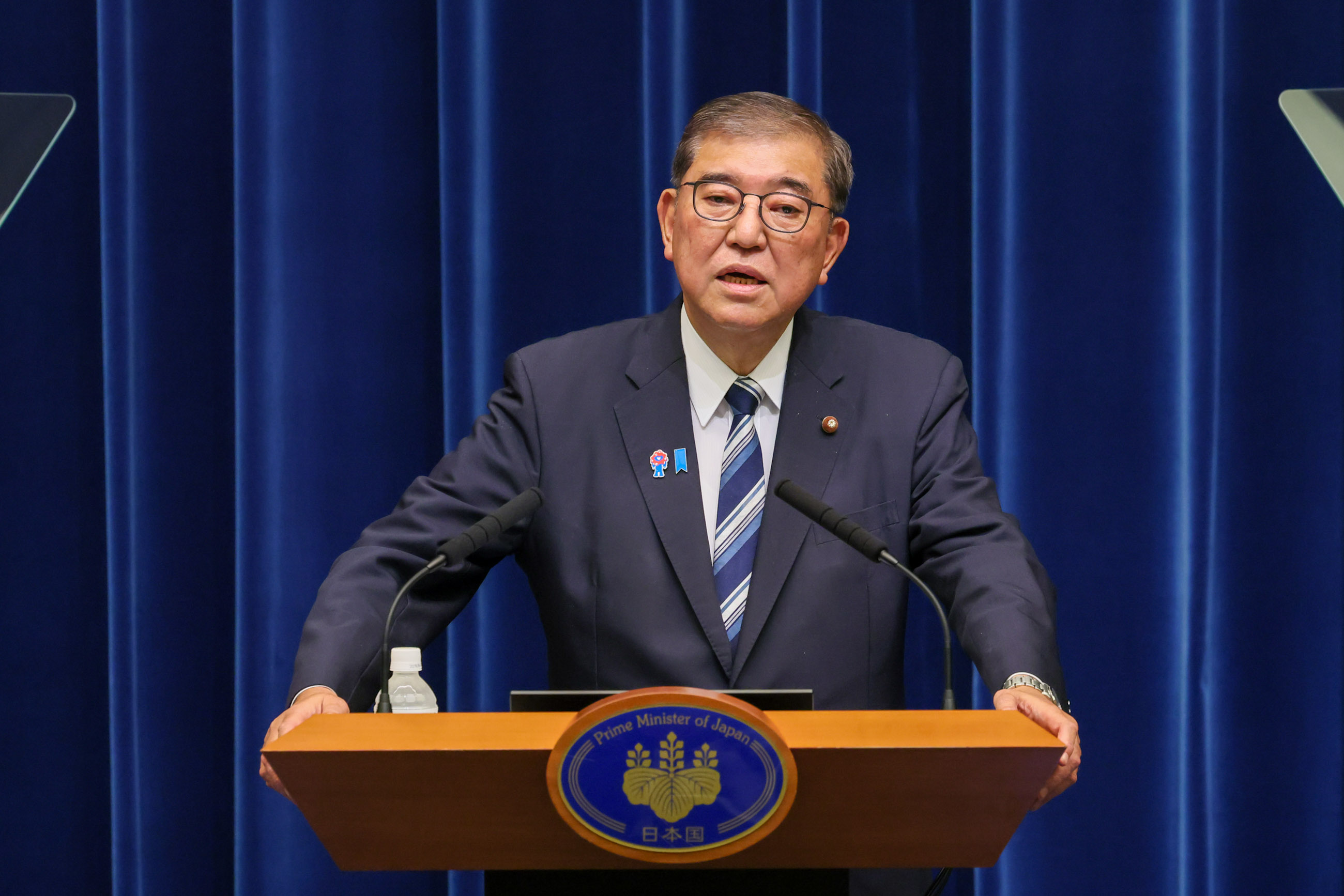Issue:
October 2025
The race for the LDP leadership exposed weaknesses in Japanese newspapers’ political coverage

Prime Minister Shigeru Ishiba’s announcement on September 6 that he intended to resign was confirmation that the Liberal Democratic Party (LDP) is a ruthless political machine that will crush anyone who attempts to correct its flaws.
The public had not called for Ishiba's resignation. Instead, he was trending upwards in opinion polls. Relations with China and South Korea were improving. He had no involvement in the LDP’s ties to the Unification Church and was not implicated in the party's funding scandal.
Ishiba was ousted because he was disliked by the rightwing of the LDP – a group of frustrated individuals with a narrow view of politics. Ironically, his strongest support came from the centre-left outside the LDP, while the conservative wing of his own party worked hardest to oust him. He resisted for several weeks, but eventually accepted the inevitable. His party opponents had willing allies among large sections of the Japanese media, desperate to engineer political intrigue and, ultimately, Ishiba’s downfall.
The campaign to unseat Ishiba began in July, when the Yomiuri Shimbun published a special edition claiming that he was about to step down. The Mainichi Shimbun made the same claim without citing reliable sources. It took several weeks for the Yomiuri to apologize for its lazy journalism. Ishiba was eventually pushed out as a result of pressure from figures inside the LDP. He was reportedly convinced to resign by Shinjiro Koizumi, his agriculture minister, who has made no secret of his desire to become prime minister.
The episode has exposed the many shortcomings of Japan's major newspapers. The day after Ishiba's press conference, they all carried an identical headline that read: “Ishiba announces his resignation”. In addition, their front pages were identically laid out, and most used the same photograph of the outgoing prime minister. Had it not been for their mastheads, it would have been impossible to tell one newspaper from another.
It is hard to imagine newspapers of both left and right in France and other liberal democracies all using the same headline and covering a story of national importance in exactly the same way. In addition, Ishiba’s resignation had been announced the previous day, so it was hardly the kind of breaking story that sends newsrooms into a panic. It would be understandable if this had happened 40 years ago, before the advent of online news. These days, however, readers rightly expect perspective from their news sources, not just a humdrum headline and an article that repeats basic information that has been in the public realm for 24 hours. Those bland front pages and lack of originality in the accompanying articles feel out of step with the times. The duplication didn’t end there: all of the big newspapers, from the Mainichi to the Sankei, ran editorials critical of Ishiba, although their discontent had been triggered by different aspects of his premiership. None had a single good word to say about him.
Ishiba's resignation announcement was the catalyst for days of speculation over the identity of his successor as LDP president and, most likely, Japan’s next prime minister. Who might run? Who will definitely run? Who will be first to hint that they will run? Who will be filmed visiting a school or supermarket? Here, too, voters were served up a diet of staged events and nothing you could rightly call media scrutiny. Yes, there were televised “debates” that, in reality, comprised prepared statements by each of the five candidates and no opportunities for discussion.
For the most part, media coverage is confined to following the candidates on the campaign trail, but there is little room for investigations into their track records or analysis of their policy stances. It was a weekly magazine, Shukan Bunshun, not a newspaper, that revealed that a member of Koizumi’s campaign staff had encouraged his supporters to post positive messages about him online, going as far as to suggest the exact wording of those messages. In general, though, the candidates must have been relieved that the media showed so little interest in their records or policies. When newspaper companies complain that young people no longer read their publications and are instead influenced by social media, perhaps they could begin by looking at their uninspiring political coverage.
It was disheartening, for example, to see newspapers devote so much space to Koizumi and Sanae Takaichi before all five candidates had even announced they would run. The election may be an internal LDP affair, but the vote will involve almost a million rank-and-file members - ordinary citizens who read and are influenced by newspapers. And what about the three “neglected” candidates? Rather than give all five equal billing, the media have joined the LDP in backing the horse that is most likely to win. This needs to change.
As usual, the LDP offered just one seat for foreign pen journalists at campaign debates and on the day of the election itself. This is unacceptable. As an organization that represents foreign correspondents, we must pressure Japan’s ruling party to open up its press conferences to all overseas media – something we should push for every time an LDP politician speaks at the FCCJ.
Karyn Nishimura is a correspondent for the French daily newspaper Libération and Radio France.

